June 13, 2019
Interview: Assaf Rinde scores THE GHOST IN THE GRAVEYARD
– by Randall D. Larson
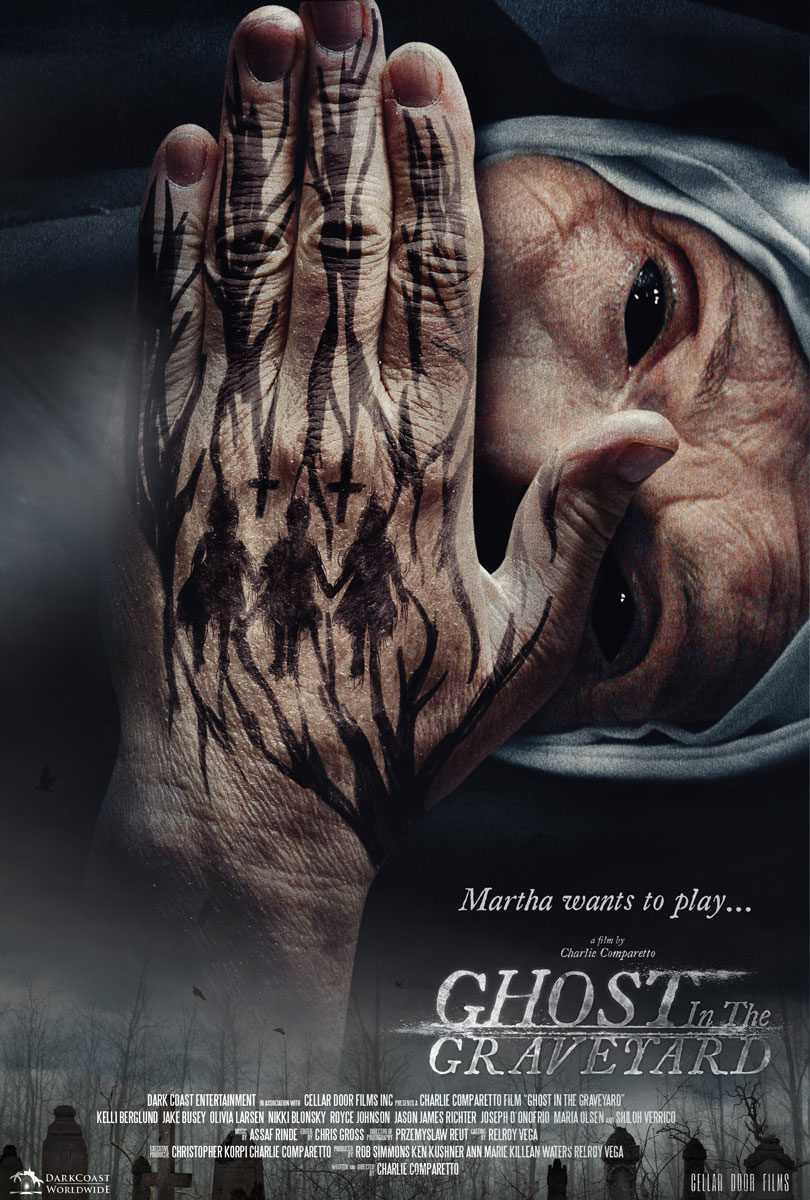 TriCoast Worldwide and their horror division, DarkCoast, has landed world distribution rights for Charlie Comparetto’s directorial debut GHOST IN THE GRAVEYARD, as reported last month by dreadcentral.com. The film screened at Cannes last May 20th and will have its next screening coming up on June 22nd in the Hollywood Chinese Theater complex as part of the Dances with Films festival.
TriCoast Worldwide and their horror division, DarkCoast, has landed world distribution rights for Charlie Comparetto’s directorial debut GHOST IN THE GRAVEYARD, as reported last month by dreadcentral.com. The film screened at Cannes last May 20th and will have its next screening coming up on June 22nd in the Hollywood Chinese Theater complex as part of the Dances with Films festival.
The film is inspired by the children’s game – “Ghost in the Graveyard,” a nighttime take on Hide and Seek that’s combined with frantic chasing to find a hidden player, called as “the ghost.” The first player who finds ghost and yells “Ghost in the graveyard!” wins the game, unless the ghost tags another player, who in turn becomes the new ghost of the game.
Comparetto, who also scripted the film, shared this synopsis of the movie: “Set in the small and eerie town of Mt. Moriah, GHOST IN THE GRAVEYARD follows the ghost of a local girl, Martha, who tragically died during the childhood game, Ghost in the Graveyard. Vengeful and unforgiving, Martha returns to haunt the now teenagers who witnessed her murder. The teen longtime blamed for the incident, Sally Sullivan, takes it upon herself to solve the ghost story and put Martha to rest in peace for good. As the mystery of Martha’s return unravels, deep secrets are revealed that will have consequences for everyone involved.”
After the film’s screening at Cannes, writer Kamarra Cole reviewed the film for the nightmarishconjurings website, noting that “I’m always very interested when horror is presented in different and [thought provoking] ways. Charlie Comparetto sets us up for what should be a fairly straight forward story set around a haunting children’s game, but what we get is a really interesting detour from where we assume the story is going.”
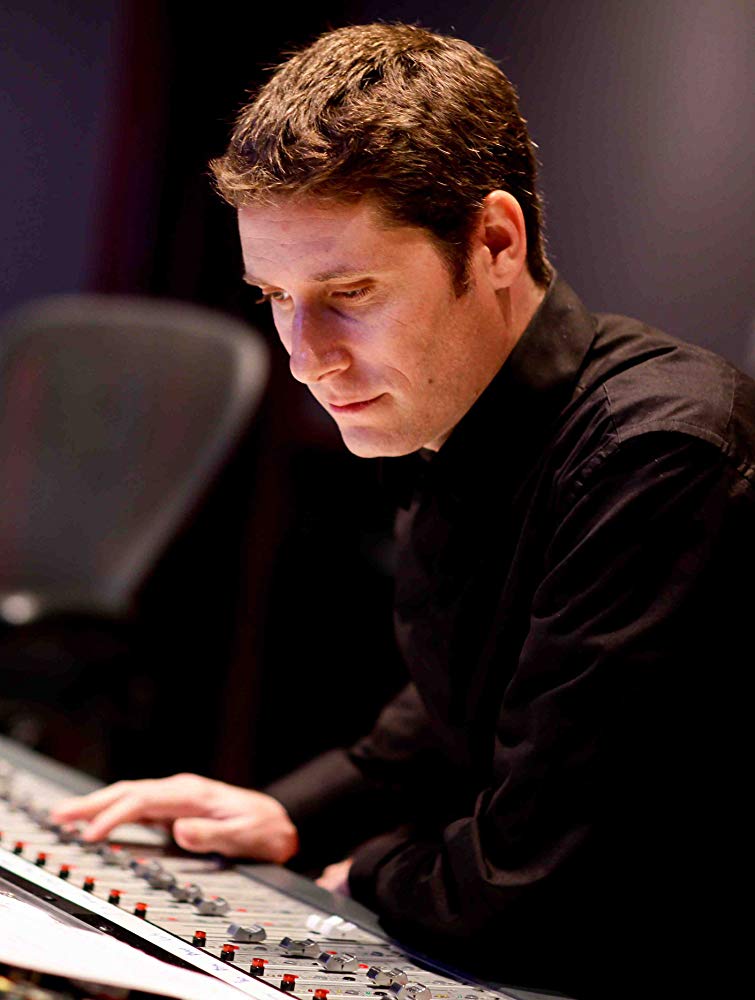
Composer Assaf Rinde (KILL ZONE, A LETTER FROM THE PAST, THE PULSE OF LIFE) provided the film with a creepy orchestral score, which Cole wrote “puts you right in the middle of the feeling you get while telling ghost stories under the sheets or around the campfire. That feeling of heightened intensity and eerie calm. All these elements together become a perfect storm that creates this world that makes the hair on the back of your neck stand up a little. GHOST IN THE GRAVEYARD doesn’t need jump scares to get you into the mood. It does that by giving us wonderful cemetery shots at night, glimpses of a ghost in passing, and the weight of good versus evil.”
I recently interviewed Assaf about his experiences scoring GHOST IN THE GRAVEYARD, and how he gave the film a unique flavor of suspense, fright, and unease.
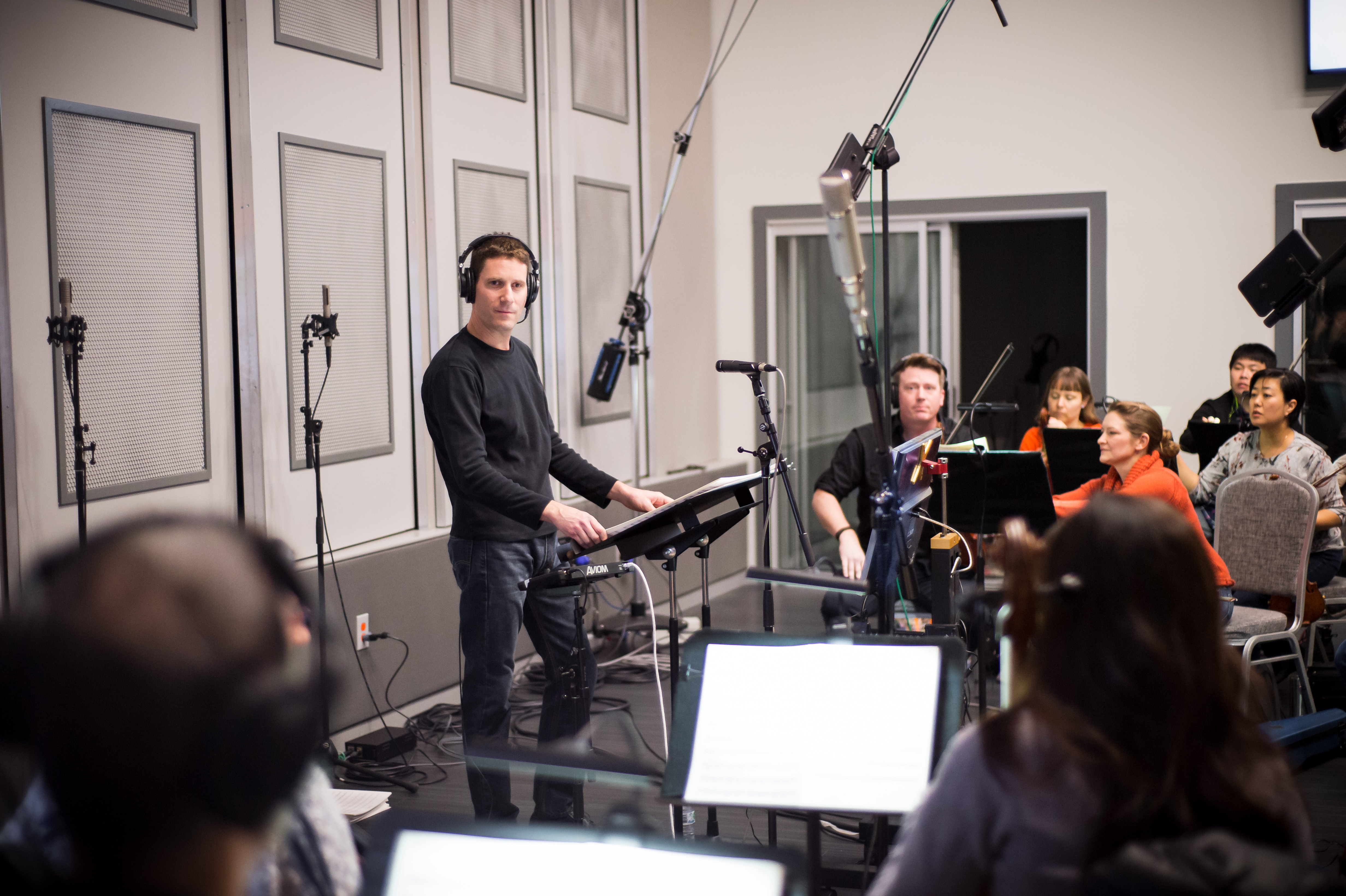
Q: How did you become involved with this project?
Assaf Rinde: I happened to come across the website for GHOST IN THE GRAVEYARD when browsing the Internet and felt drawn to the project. Something inside me wouldn’t let me pass on this opportunity so I contacted the film’s creator and director, Charlie Comparetto, and we basically haven’t stopped talking since!
Q: Once you were on board, what kind of discussions did you have with the director to determine the type of music he wanted for this score – and how did you work with him during the process as you were developing the score?
Assaf Rinde: We started by just getting a feel for each others’ tastes, discussing general life experiences and movies we both liked. Our conversations were about more than just music, they were about the story, the experience, the vibe, and the overall structure of the film. I wanted to learn about Charlie’s cinematic references and preferences and get a feel for his creative language since this was our first time working together. I learned that he is a huge fan of DONNIE DARKO which has had a big influence on his filmmaking, and we discovered a shared love for the classic film CINEMA PARADISO which, while completely different from GHOST IN THE GRAVEYARD, shares a lot of the warmth that I was really attracted to in Charlie’s film and gave us a great cinematic reference point. After reading the original script for GHOST IN THE GRAVEYARD I wrote a theme that I thought would be perfect for the film, but after seeing the initial footage Charlie and I both agreed that this theme would never survive. Thematically the movie needed something that could really carry it from beginning to end, so I started over. It took a few long days of working it out but eventually I landed on something that we both knew was the right theme. From that very beginning and all the way to the end of the process, Charlie and I were in complete sync musically and philosophically. It really was a smooth ride all the way to the finish line and we ended up with something we both felt pretty proud of.
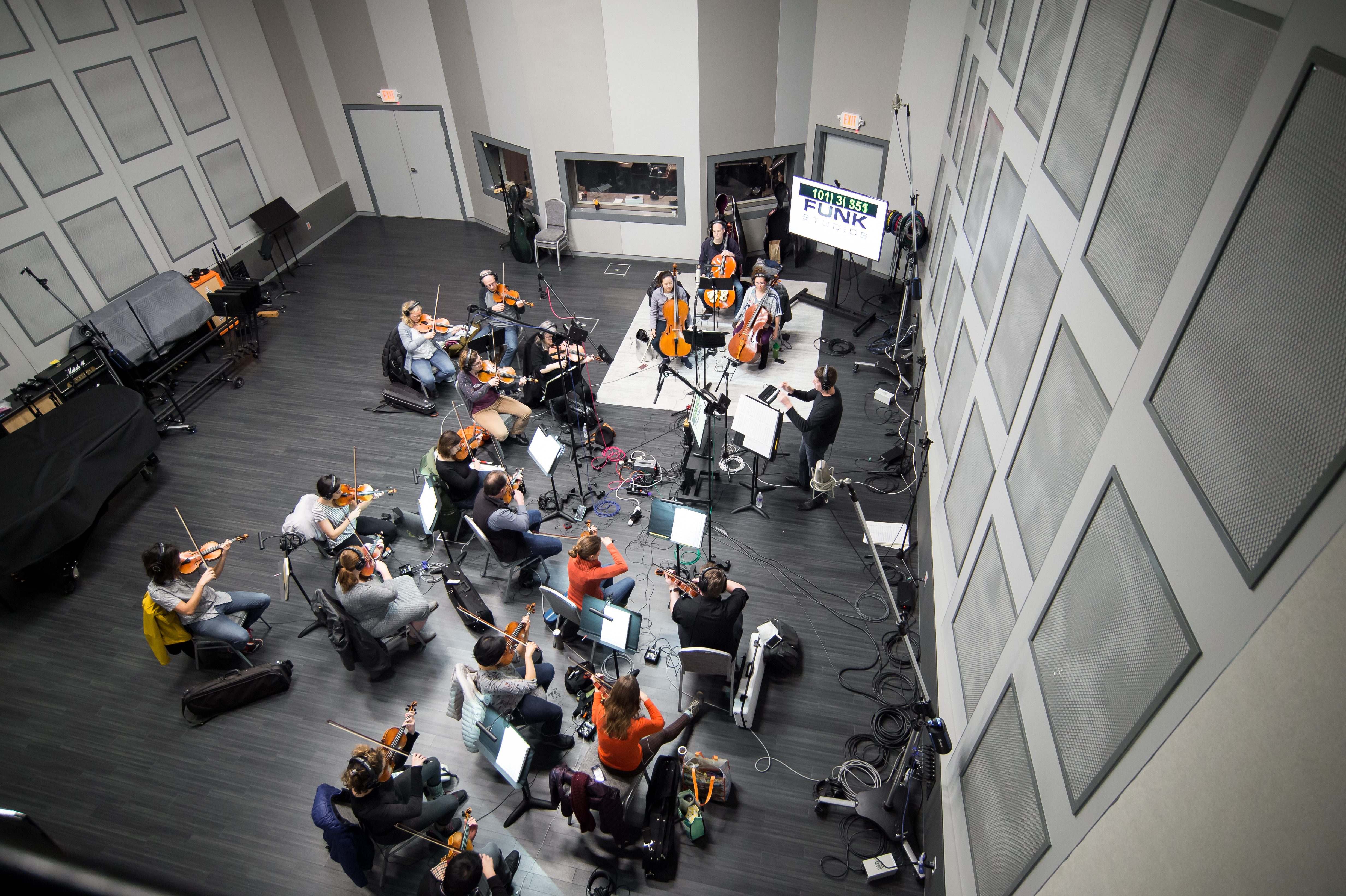
Q: What kind of instrumental pallet did you use on this score – and how did the film’s budget affect that?
Assaf Rinde: The film needed a very personal and warm pallet. On the one hand it needed to feel very “home,” but on the other hand it needed to have the capability to be driving, explosive, spooky, and scary. The film did not have a huge budget, but we had enough to hire a great sounding orchestra in order to pull off this score. Most of the score is built around some very layered and textural strings sounds in combination with some piano elements creating a very specific sound signature for the film. There are also some more complex textures featuring percussion instruments, synths, and other musical sound design elements ranging from low-energy spooky to high intensity aggressive. The main theme melody can be heard on a piano, glockenspiel, and music box, and there are a few key moments where you hear a child’s voice to support the ghost of Martha.
Q: What elements of this ghost story particularly inspired you as you were composing the music? Did the young age of the ghost, and of the child protagonists, suggest a particular musical treatment?
Assaf Rinde: GHOST IN THE GRAVEYARD features Martha, the ghost, as a child, but most of the film is focused on the main characters’ teen years, so we needed the pallet to support them and their development. The only elements that reference their early childhood are the child’s voice and the music box, the rest of the score has a much more mature and “serious” treatment. There were plenty of moments in the film that triggered a lot of excitement and inspiration on my end, and in general Charlie left a lot of room to feature music as part of the storytelling experience and not just to support scares or big action moments. The winter vibe of the film, the gorgeous upstate New York visuals, the incredible acting by Kelli Berglund and Olivia Larsen, and the beautiful cinematography by Przemyslaw Reut all contributed to how connected and inspired I felt by this project. On top of that, I always felt like Charlie and I were on the same page and he supported and guided the creative process in a way that just made the whole experience incredibly smooth and fun.
Q: How would you describe the “shape” of the score, how you configured the orchestration and musical layering of what the film needed?
Assaf Rinde: There’s a lot of scope to cover in this film from children playing a graveyard game, teenagers navigating high school and romance, to death, scares, and witches, so the score needed to be structured accordingly. The score’s two main functions were driving and supporting the story and characters as they developed, and gluing together all the different elements into an emotional experience that worked as one overarching piece. The instrumentation and orchestral textures of all the different cues were very carefully thought out and in most part were derived from the main theme in terms of color, rhythm, and/or harmonic language. The orchestral colors were very much a direct result of the colors and visual elements featured on the screen, the action, the actors, and of course the story itself. We wanted to create something that was pretty puristic in terms of the selection of instruments, a score that felt like a “classic” orchestral score but that was current enough and utilized more advanced orchestration and production techniques. What we ended up with was a score that was written and orchestrated in a very intricately layered and textured nature and was only possible to pull off in a recording studio environment. I had the pleasure of collaborating on the orchestration with an incredibly talented young composer, Jillian Whitaker, who was a great asset to the entire scoring experience, especially the orchestration process.
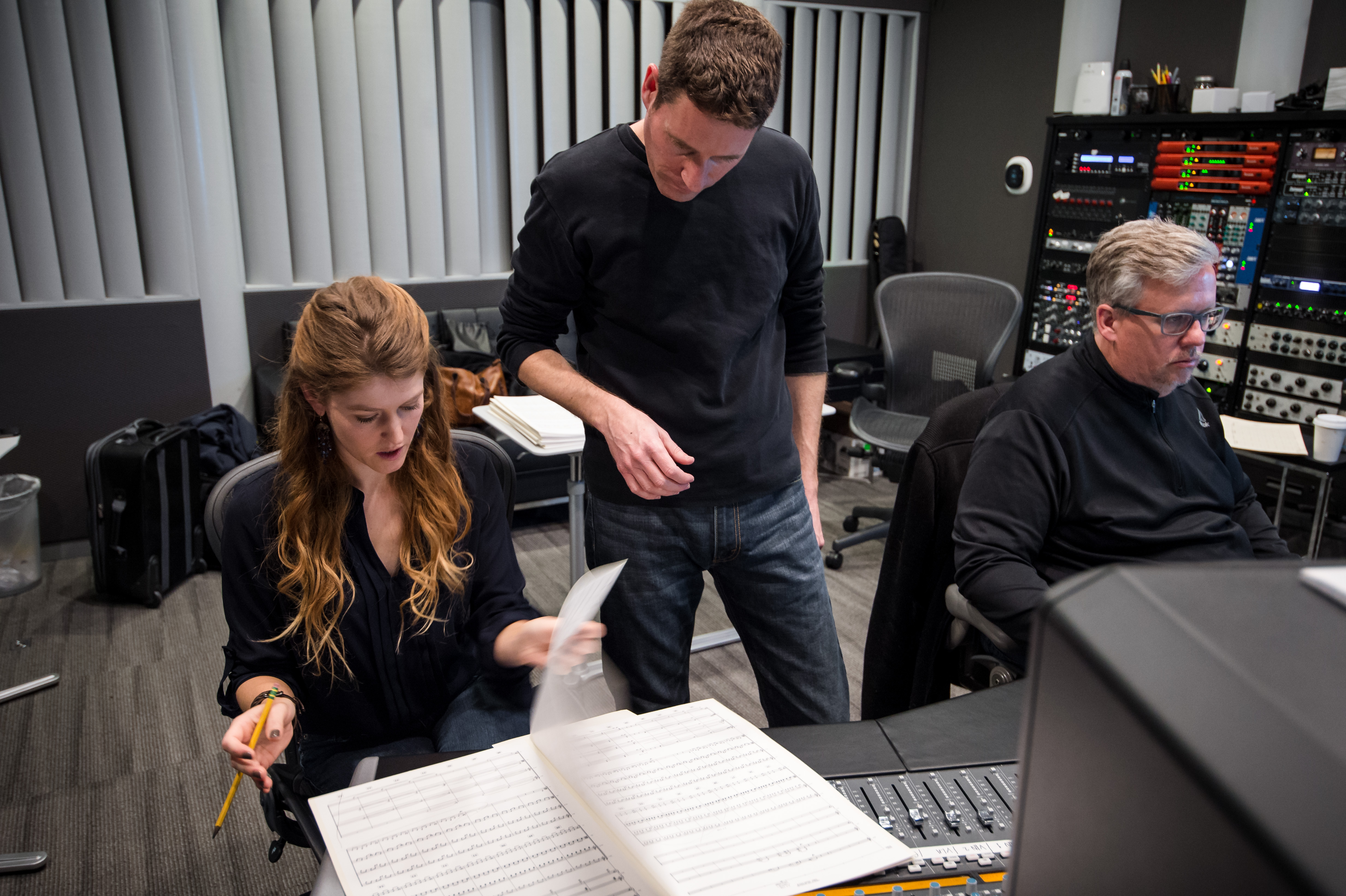
Q: Is there a thematic or motivic structure to the score you can describe?
Assaf Rinde: In terms of thematic elements, we have the ghost theme (Martha Theme) which is introduced multiple times during the film either in its entirety or in a more fragmented, motivic way. The main theme is derived from the ghost theme, but is much warmer and less spooky, and changes its appearance throughout the course of the film. We also have the love theme supporting Sally (our main character) and Reed (her love interest) which is sometimes used in a subliminal way to support some of the twists and turns involving the main characters as the story develops. Later on in the film we introduce the “Think Bigger” theme as Sally comes to understand her greater purpose in life.
Q: What was your technique in this score to augment the scariness/spookiness of the ghost story and the graveyard setting?
Assaf Rinde: Both Charlie and I felt strongly that less is more when it came to the scary elements of the score. We do have a few “jump scare” moments on screen and in the score, but for the most part we took a more subtle approach with quiet and whispering strings elements that were more appropriate and organic to the film style and overall “winter” vibe of the visuals.
Q: What do you feel is the score’s responsibility in a horror film/ghost story like this in setting up, going into, or coming out of some of the film’s major scare moments?
Assaf Rinde: Music can do so much for a film like this in terms of scares, but it is really there to enhance and support what is happening on screen. In some cases, you need to play a game with the audience where they should feel that something scary is about to happen, but you can’t give away when it will happen. It’s that feeling of “sitting on the edge of your seat,” or in some cases trying to hide in your seat. The idea is to keep the audience interested and aware of their senses without giving away what’s about to happen and only using jump-scares sparingly to really enhance their effect. We don’t want them thinking about what’s happening, we want to trigger some sort of emotional response. A lot of horror films are based around the approach of scaring you with what you can’t see by establishing the psychological effect of “there’s something there,” but not letting you know what it is, where it is, or when it’s going to show up. The music is really there to build and contribute to the audience’s internal monolog. The trick is balancing between telling them enough that they stay engaged, but not giving away too much. This is no different than the way a good script or a good story in general is structured. GHOST IN THE GRAVEYARD is not your typical horror movie, so the biggest thing we had to establish from the get-go was the overall vibe. This musical vibe works together with the visuals to establish a delicate balance between feeling warm and “home,” and feeling uncomfortable and uncertain all at the same time.
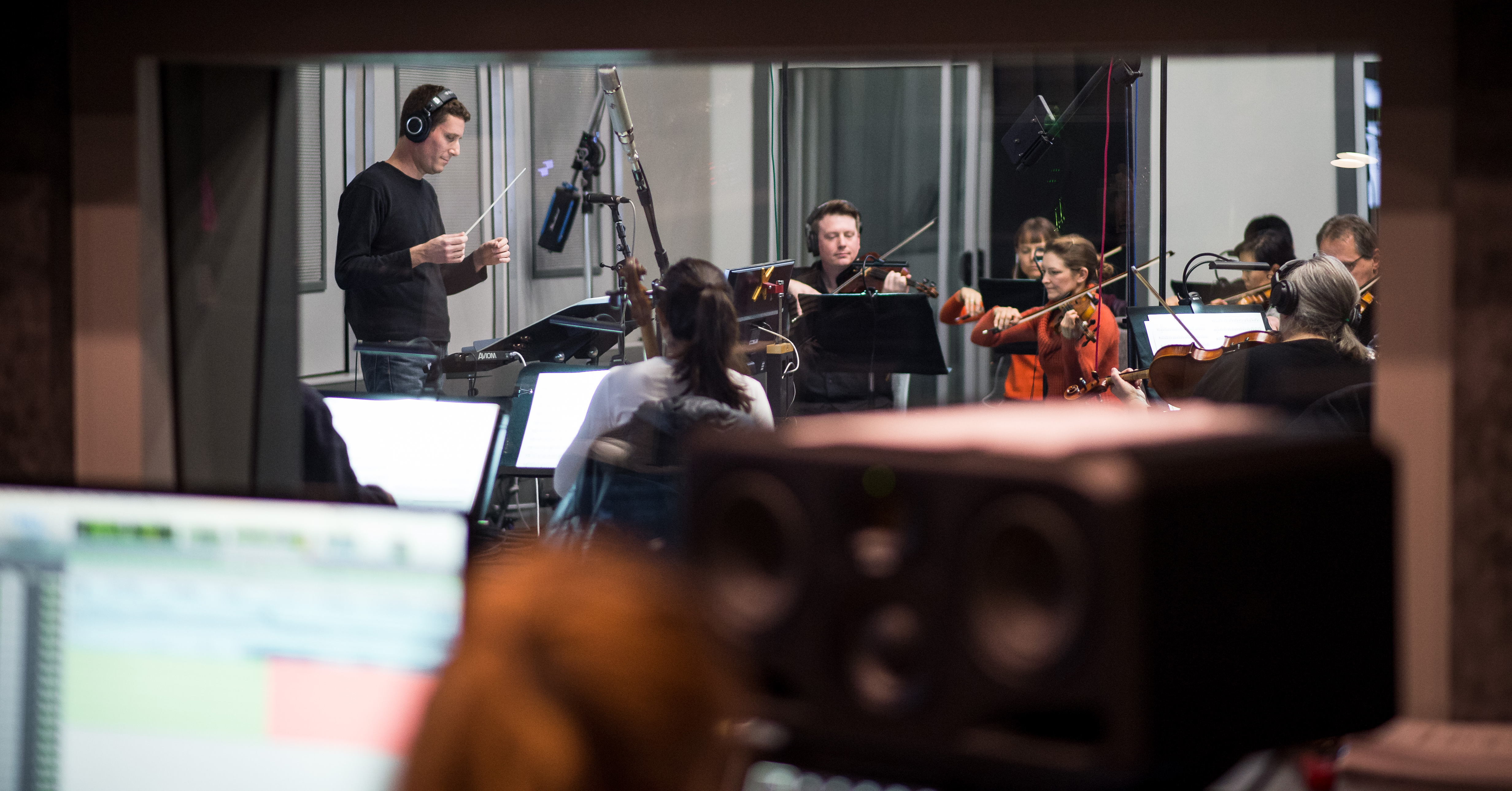
Q: Without giving away any spoilers, is there a particular musical moment that you are especially pleased with in this score?
Assaf Rinde: There are two key moments in the score that I am pretty pleased with both because of how they land in the context of the film, and because of how all the musical puzzle pieces come together into one big layered statement of the themes. One of those moments is a chase sequence involving Martha (the ghost), and the other is towards the end of the film where all of the characters come together as things climax and get resolved in one way or another. As I was writing these two moments of the score it felt like they were almost writing themselves without much interference from me. The music really came from the images on the screen and I remember thinking that the smartest thing I could do for the score in those moments would be to stay out of the way and let it be what it wanted to be.
For more information on the composer, see http://assafrinde.com/
Related story: read my previous interview with Assaf in my Sept. 2009 Soundtrax column here.
Watch the GHOST IN THE GRAVEYARD trailer:




